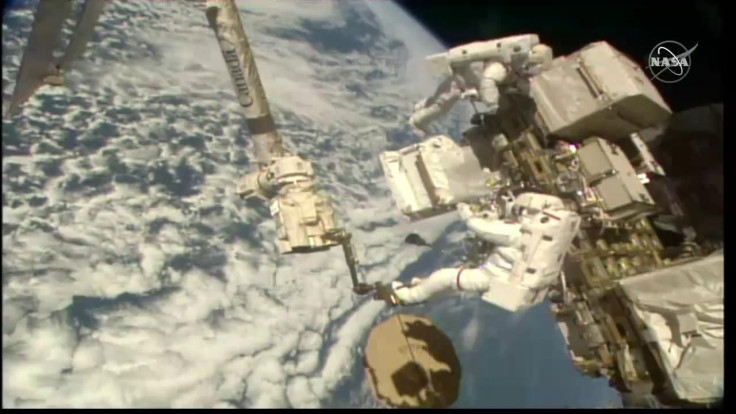ISS Astronauts Complete Six-Hour Spacewalk To Repair Particle Detector

The European Space Agency’s (ESA) Commander Luca Parmitano and NASA’s Andrew Morgan recently completed a six-hour, two-minute spacewalk to install a new cooling system for the Alpha Magnetic Spectrometer (AMS). The third spacewalk came after two previous ones to prepare the $2 billion cosmic ray detector for repairs.
Spacewalk
The crew completed the primary tasks for the spacewalk which include installing the upgraded cooling system, calling the upgraded tracker thermal pump system, completing the power and data connection and connecting the cooling lines to the new system.
They also completed the additional task of installing an insulating blanket on the AMS to replace the ones they removed during the first spacewalk.
“It is the first long day of a very busy several weeks for the space station crew,” NASA said, as SpaceX Dragon and Russian Progress cargo missions are already scheduled to launch to the station. Once the science investigation-loaded spacecrafts arrive, the astronauts will then be busy with the arrivals as well as other work.
For now, teams based on Earth are preparing for a fourth spacewalk to conduct leak checks on the new repairs and to complete the repair work so that operations on the cosmic ray detector can resume.
Although it was the third spacewalk to repair the AMS, it is the 11th spacewalk for the year and only the latest out of a total of 224 spacewalks at the ISS. As for Parmitano, he has completed five spacewalks with a total of 26 hours and 53 minutes, while Morgan has so far logged 36 hours and 32 minutes over the course of six spacewalks since July.
Alpha Magnetic Spectrometer
The AMS was installed in 2011 and since then it has observed hundreds of thousands of positrons. The data collected by AMS could help scientists to understand and determine the makeup of antimatter, which was presumably created during the Big Bang.
However, the device was only meant to operate for three years, but it worked for eight years before cooling pump failures caused problems. Since the device was not meant to be serviced in space, NASA scientists had to develop special tools and then send them up to the ISS in order to do the repairs.
According to NASA, the process, from creating the tools and preparing for the spacewalks, also prepares the teams for the type of spacewalks that could be required on Moon and Mars missions.
© Copyright IBTimes 2024. All rights reserved.






















